#Lear Green
Text
https://x.com/AfricanArchives/status/1704567631515160830?s=20

Apart from Henry “Box” Brown, who mailed himself to freedom in a wooden box did you know there was a woman who also did the same?
Lear Green’s story is less well-known.
Green was an enslaved young woman who made one of history’s most daring and innovative escapes in order to marry the man she loved. Green was able to flee her slaveowner, James Noble, in an old wooden sailor’s chest during a long and arduous shipping journey from Baltimore to Philadelphia. Slaveholder and butter dealer Noble had “inherited” Green from his mother-in-law.
Green, born in 1839, was in her teens when she fell in love with a free Black man, William Adams, who asked her to marry him. Green initially refused because she did not want her children to be born into slavery. “How can I perform the duties of wife and mother while burdened by the shackles of slavery?” Green reportedly asked Adams. But Green later changed her mind after Adams and his mother, also a free woman, came up with a plan for her to escape.
Green, who was now determined to escape the oppression of slavery, purchased an old sailor’s chest and placed various items in it, including “a quilt, a pillow, and a few articles of raiment, with a small quantity of food and a bottle of water.”
Her fiance Adams and his mother fastened the chest with heavy rope, with Green cramped inside. Adam’s mother boarded an Ericsson steamboat in Baltimore and brought the chest with her. The chest was secured with rope and stowed with other freight. During the 18-hour journey to Philadelphia, Adams’ mother snuck into the compartment and from time to time lifted the lid of the chest to check in on Green and allow her a breath of fresh air.
After 18 hours in the chest, the ship arrived in Philadelphia. Green would meet with Underground Railroad conductor William Still before making her way further North to marry Adams and move to Canada. As expected, Green’s slaveowner Noble named her a fugitive slave, and a manhunt was launched to bring her back.
Noble reportedly posted an advertisement of her escape, which read as follows: “$150 REWARD. Ran away from the subscriber, on Sunday night, 27th inst., my NEGRO GIRL, Lear Green_about 18 years of age, black complexion, round featured, good looking and ordinary size… I have reason to be confident that she was persuaded by a negro man named Wm Adams…he had heard to say he was going to marry the above girl.”
Green and Adams married and settled in Elmira, New York. But their joy together was short-lived. After three years of marriage, Green suddenly died at the age of 21 for unknown reasons.
#Lear Green’s story is less well-known#Lear Green#Freedmen#Escapees#Freedom from enslavement#baltimore#philadelphia
44 notes
·
View notes
Text
Day 228
Congratulation on the anniv

244 notes
·
View notes
Text

pokemas lore gets wild
#pokemon masters#pokemas#blue pokemon#trainer blue#trainer green#trainer paulo#bettie pokemon#paulo pokemon#lear pokemon#i hate how tumblr tags trainers. fuck you i dont know lears trainer class
253 notes
·
View notes
Text
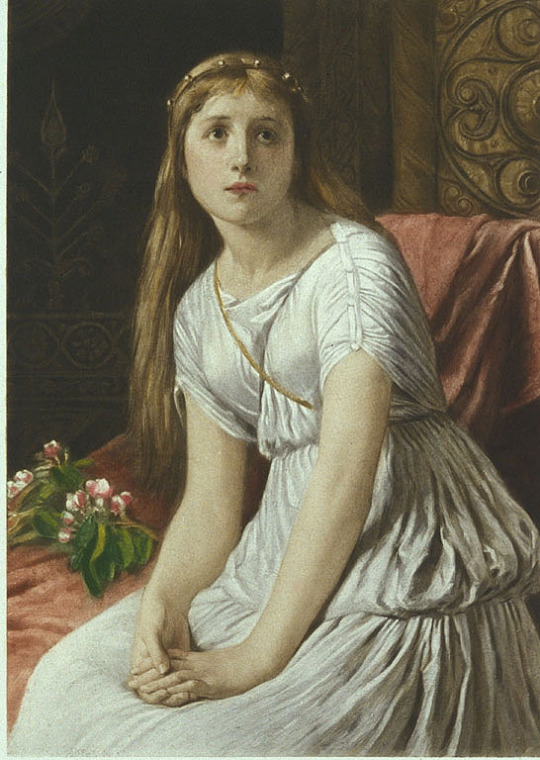
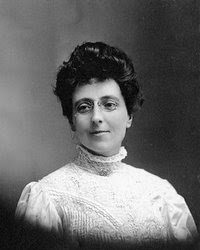
The Annotated Anne of Green Gables ~~ a special rereading
CHAPTER III ~~ Marilla Cuthbert is Surprised
"Will you please call me Cordelia?"
Here, 'plain and boring' Anne Shirley introduces herself to Marilla as Cordelia, for she feels the name is much more romantic than 'Anne.' But what is the background of this name, and why did Anne find it so romantic? The name Cordelia itself is derived from a Middle Welsh name meaning "jewel of the sea." I can see already why Anne finds it so romantic a name! In England, there is also a legendary Queen Cordelia of the Britons. There is no real historical evidence that she ever existed, but her legend lives on. It goes that in the 9th century, Cordelia was the youngest and favorite daughter of King Lear. Eventually, she fell out of favor with her father and was granted no land when he split it between his daughters. She moved to Gaul to live with her husband, the king of the Franks. Later, the other daughters' husbands revolted and overthrew King Lear, who fled to Cordelia. Cordelia raised an army, invaded Britain, and got King Lear back on the throne. Soon after, Lear died, and so did her husband, Cordelia, returned to Britain to become Queen Cordelia. Unfortunately, her rule did not last long, for her sisters' sons revolted and fought her armies before capturing her. Sadly, Cordelia then killed herself. How Anne is probably familiar with Cordelia is from William Shakespeare's tragedy King Lear, in which things end decidedly worse for Cordelia (she is hanged after being captured before ever becoming queen). If we look at the first story, of course, being a Queen is beyond romantic! If we look at both versions, we can see how Cordelia saves (or at least attempts) her father and the devotion that she has for him. This makes her the romantic hero of her story and probably very appealing to the orphaned Anne! Asking to be called Cordelia could be her way of making herself the hero in her own story. Above is a picture of Queen Cordelia of Britain!
"A-n-n looks dreadful, but A-n-n-e looks so much more distinguished."
Keeping with the name theme for this chapter, we have the iconic moment where Anne makes sure that Marilla says and spells her name with an 'e.' She claims that with this extra letter, her name is much more romantic and distinguished, making her feel the same. In a total reversal, Lucy Maud Montgomery, who went by Maud, did not add an 'e' to her name and would get upset at those who added one mistakenly. It is true that most Mauds are spelled like her, but it can be spelled with an 'e' at the end. So, multiple questions arise for me about this fact. 1. Does the adding an 'e' only apply to certain names like Ann/Anne? 2. Is Maud actually the more distinguished of the pair? or 3. Does Montgomery not believe that certain names are more distinguished than others and is just making Anne out to be overly sensitive? (also, above is our favorite author)
This time, the notes in the chapter were not super interesting due to its length and content. I mean, I could have written more about farmhouse spare rooms, but I chose to abstain. Also, I meant to write this yesterday, but I was too wrapped up in learning how to crochet!
#anne of green gables#anne with an e#aogg#awae#anne shirley#marilla cuthbert#cordelia#king lear#lm montgomery
12 notes
·
View notes
Text
LAST post for tonight . Two videos taped together
#art#animation#green#jay#blue#this + last few posts were soppused to be posted weeks ago. ough i STILL cant get over my dumb dhmis ocs they occupy most of my mind.#theyre still puppets but theyre learing the edge of being completely something else but they are still the same guys from the same universe#extremely convulted explanation I love puppets i love performance art
49 notes
·
View notes
Text
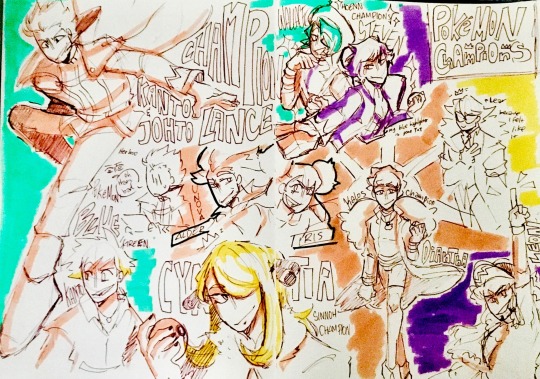
Pokémon champions my beloveds
And Lear
#justtrashdoodles#pokemon#pokemon champions#champion lance#champion cynthia#champion steven#steven stone#champion wallace#champion diantha#champion iris#champion alder#trainer blue#trainer green#champion leon#prince lear#i was sick this morning and decided to draw the Pokémon champions aha-#dw im Fine now
266 notes
·
View notes
Text
Fave Five: Shakesqueer, Part II
For part I, click here.
Teach the Torches to Burn by Caleb Roehrig (historical m/m YA Romeo & Juliet)
Twelfth Grade Night by Molly Horton Booth (text), Stephanie Kate Strohm (text), and Jamie Green (art) (contemporary YA fantasy graphic novel Twelfth Night)
Ben and Beatriz by Katalina Gamarra (pan m/f contemp rom Much Ado About Nothing)
The Death I Gave Him by Em X. Liu (sci-fi…

View On WordPress
#Arden High#Ben and Beatriz#Caleb Roehrig#Chloe Liese#Em X. Liu#Hamlet#Jamie Green#Katalina Gamarra#King Cheer#King Lear#Molly Booth#Much Ado About Nothing#Reimaginings#Romeo & Juliet#Shakespeare#Stephanie Kate Strohm#The Death I Gave Him#Two Wrongs Make a Right
28 notes
·
View notes
Text

<- Made a lot of rivals.
#dash commentary#green blue leaf giovanni gold....................................... do we count lear????
8 notes
·
View notes
Text
i want to create stuff so bad i think i miss being 12, 13 and just making shit like every day and not caring about what im making just Making Stuff. writing poorly-written stories where i overdescribe what a character looks like because i dont really understand how writing works, writing in notebooks my epic fantasies that i never get past the first page of but have plans for 5 books in my head, gluing stuff together and drawing fantasy cats on scrap pieces of paper, making websites for my toy horses that i took photos with on my digital camera, i miss it. i want to just create things but i never find the time or focus or the tools or materials but maybe i should just sit down and do weird shit again.
#learing how to better do things is simultaneously the best and worst thing for creativity because you then have the skills to be better#but you also have the knolwedge that you could be better and it can choke you yknow#btw these are all real examples of things i would do!#i had this horse story that was like these magical horses with all specific colors of their pelts and manes and all these special names#and then like i got really into model horses for a period of time so i made a website with pictures of my model horses#and i even made a stable for them and this giant fucking piece of wood board eith green felt on it so they could have grass#i miss that! i miss just making shit for funsies#GOD AND I JUST REMEMBERED I USED TO SEW BAGS OUT OF OLD CLOTHES that was so fun. i miss it too#ahhh the divine act of creation. how i have loved it since i was born
5 notes
·
View notes
Photo



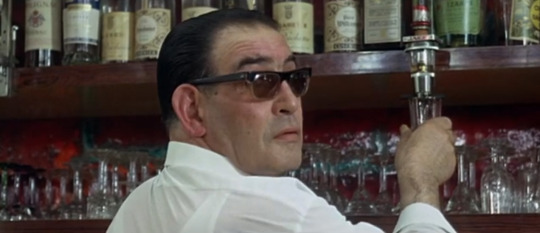


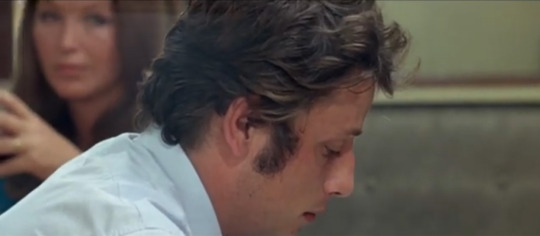

#2 ou 3 choses que je sais d'elle#jean-luc godard#1967#un homme qui dort#a brief history of time#from the big bang to black holes#stephen w. hawking#1988#die physiker#friedrich dürrenmatt#1962#green day#king lear#die höhle der vergessenen träume
7 notes
·
View notes
Text
Top Ten ocs

10. Gus "Guts" Price, Original Modern Warfare One and Two
Guts is the nephew of John Price, he is emotional some say more than his father. Guts's passion to always protect and bring his men home makes it harder when he loses one.
Guts was based off of a kid that I knew in highschool...

9. Jean Greene, Modern Warfare 2019 and Modern Warfare 2022
Hating all weather is normal for Jean, being the Shadow Company's medic he's seen his so much shit. He lives off of Gatorade and does his job and gives no fucks. He respects few, cares none and loves Gatorade.
Jean's love of Gatorade was based off me everything else I legit pulled out of my ass.

8. Bj "Numb" Carter, Modern Warfare 2019 and Modern Warfare 2022
Numb is stupid, stupid as hell... Shepherd's right hand man...for the most part. His personal feelings get too involved with the mission.
Numb happened bc Shepherd having a lack makes me weak.
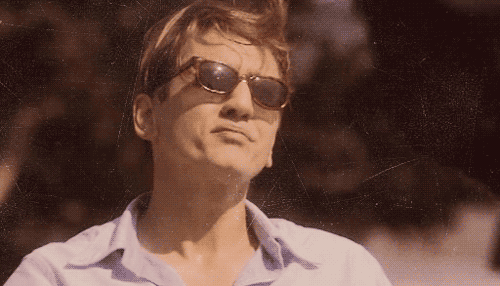
7. Rex Jackson, Black Ops 1-3 + Cold War
Known as Mini Adler, Rex is Rex...
I saw a photo of Barry Pepper that made him look like Adler and I went “This is too easy„

6. Harvard "Harv" Rose, Original Modern Warfare One and Two
Harv the kleptomaniac and boyfriend of General Shepherd, he is Guts best friend and leader if The Bumbling Baboons. The man can read, speak and write thanks to Shepherd.
Harv...my lil demonic gay, my lil obsessive gay...he happened because I was like “You know... Shepherd needs love too.

5. Samael "Sammy" Pierson, World War Two
Sammy is a brave man, tired but brave. The working medic for first Platoon, Sammy's love knows no bounds.
Sammy happened because I fell in love with Turner.
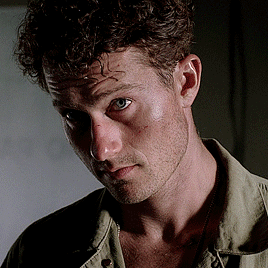
4. Jon Henry Jones, World War Two, Cold war
Tired, very tired...Jon was a part of The Tank boys, the leader actually. Jon's been through a lot. Known for pushing himself harder than needed, Jon holds a special place in my heart.
Jon happened because I knew The Tank boys needed someone to hold them together.
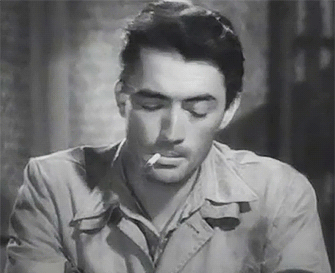
3. Vincent "Lear" Russo, Black Ops One and Cold War
Lear is too smart for his own good, he knew he was going to die...granted it took a few years but he still called.
Lear was based off of how I felt that day, I was very emotionally exhausted and felt very unhappy so I made an OC out of it.
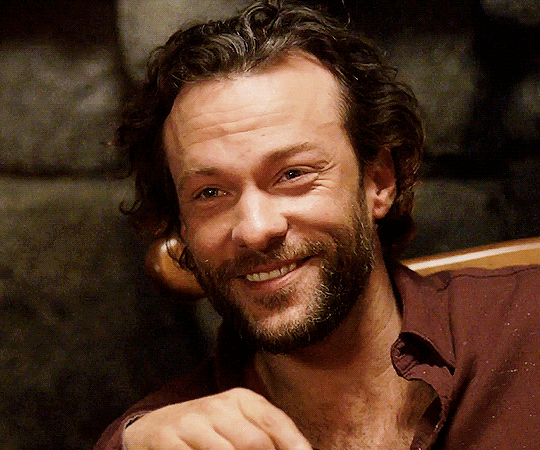
2. Richard "Duck" Johnson, Modern Warfare 2019 and Modern Warfare 2022
Duck never follows rules, he's a bit of a slut that way. He's Price's husband but it didn't start off like that.
Duck happened out of pure accident, but a happy accident at that. Love you dumb baby boy.

1. Nathan "Nov, Doc, November, Bravo 7" Price, Original Modern Warfare 1-3
Oh this sweet little ex medic, dirty dirty rat man. Nov unintelligible and looming is always how the day goes. Married to Gaz, he'd give his whole ass life for him.
Well it all had to start somewhere and this bitch started everything.
#guts price#jean greene#numb carter#rex jackson#harv#sammy pierson#jon henry jones#john henry jones#lear#duck johnson#nov price
2 notes
·
View notes
Text
Remembering Norman Lear: A Trailblazer in Television Production
EMMY-WINNING TV PRODUCER-WRITER NORMAN LEAR PASSES AWAY AT 101 Los Angeles,
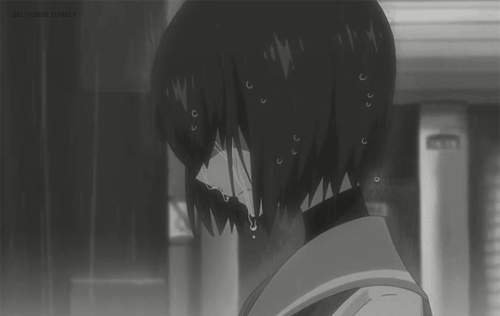
CA - The entertainment industry mourns the loss of legendary TV producer and writer, Norman Lear, who passed away at the age of 101 on Tuesday.
With an illustrious career spanning several decades, Lear was not only known for his creative genius but also for his dedication to liberal causes.
His family confirmed the news of his demise, revealing that Lear peacefully passed away at his Los Angeles home surrounded by loved ones.
Through a heartfelt statement posted on Facebook, Lear's family shared, "Norman left this world peacefully, embraced by the love of family and friends.
We spent his final moments together, sharing stories and songs, cherishing the incredible legacy he leaves behind." Lear's contributions to the television industry are immeasurable, earning him six Emmy Awards throughout his career.
He gained recognition for creating groundbreaking shows that tackled social issues head-on and challenged the status quo.
His notable productions include "All in the Family," "The Jeffersons," and "Maude," which not only entertained audiences but also sparked thoughtful conversations on topics such as racism, sexism, and societal inequalities.
Despite reaching the remarkable age of 101, Lear remained actively involved in his craft well into his 90s. His unwavering dedication to his work and his passionate advocacy for progressive values made him an influential figure in both the entertainment and political realms.
Lear's impact extended far beyond the television screen. He was a strong advocate for numerous liberal causes and used his platform to raise awareness and drive social change.
His philanthropic efforts included supporting organisations fighting for equal rights, education, and environmental conservation.
As news of Lear's passing spreads, tributes and heartfelt messages flood in from fellow industry professionals, fans, and activists alike.
Many express their gratitude for Lear's trailblazing contributions, which paved the way for more inclusive and thought-provoking storytelling.
Norman Lear will be remembered as a true pioneer, whose relentless pursuit of artistic excellence and social justice revolutionised television.
His legacy will continue to inspire generations to come, reminding us all of the power of storytelling in shaping our society for the better.
In honor of his remarkable life and career, tributes and memorial events are being planned to celebrate and pay homage to the unforgettable mark Norman Lear left on the entertainment industry.
#lawsuit#politics#trudeau#urges#presidential#sanctions#reporting#world news#world#green party#CA - The entertainment industry mourns the loss of legendary TV producer and writer#Norman Lear#who passed away at the age of 101 on Tuesd
1 note
·
View note
Text
'Lilli Schwenk Hornig was 23 years old when she arrived at Los Alamos to contribute to the development of an atomic bomb that would end World War II. A passionate chemist, Lilli battled sexism throughout her academic and professional careers and remained a steadfast advocate for female scientists like herself.
Lilli Hornig: What I remember in my mind is the—these sort of boiling clouds and color—vivid colors like violet, purple, orange, yellow, red, just everything. And we were all kind of shaken up.
Katie Hafner: That’s the scientist Lilli Hornig, describing what she recalls of the first test of a nuclear bomb on 16 July 1945 in the New Mexico desert.
This is Lost Women of the Manhattan Project, a special series of Lost Women of Science focusing on the female scientists and their contributions to the building of the first atomic bomb.
In this episode, we share the story of a young chemist who experienced Nazism firsthand in Europe before finding herself in the middle of the United States’ war against Hitler, working against time to develop the detonating device that would make the Trinity test possible. After that test, and the bombs themselves that were dropped on Japan, she was shaken, and haunted.
We also want to tell you Lilli Hornig’s story because she's an example of something we keep seeing over and over at Lost Women of Science: female scientists who follow their scientist husbands to new jobs in academe or industry. The Manhattan Project scooped up many of these spouses though it’s impossible to put a number on just how many.
And there’s more about Lilli Hornig: she’s the only female scientist named in Oppenheimer, Christopher Nolan’s blockbuster film. Her cameo appearance isn’t far off the mark. She’s shown as a woman determined to work as a chemist, not a secretary.
In 2011, the year she turned 90, the real Lilli Hornig sat down for an oral history interview with the Atomic Heritage Foundation. The audio you’ll hear from that conversation is a little bit scratchy, and although Hornig is still as sharp as can be, it’s clear that she’s, well, 90.
Producer Mackenzie Tatananni brings us Lilli Hornig’s story.
Mackenzie Tatananni: Lilli Schwenk was born on March 22, 1921, to Jewish parents in a tiny Czech town about 50 miles outside of Prague. Her father was an organic chemist, her mother a pediatrician. Lilli was introduced to science during her formative years, and the interest stuck.
Hornig: My father took me occasionally, very occasionally, on a Sunday to his lab, and I just loved all the glassware, and he gave me some micro-sized glassware for my doll house. So, I always assumed I would be either a chemist or a physician. And I was kind of squeamish at the time, so I went for chemistry.
Tatananni: In 1929, when Lilli was eight years old, she moved with her family to Berlin, where her father began work for a pharmaceutical company. But anti-semitism was on the rise and the Nazis were establishing a stronghold throughout Germany. The danger to the Schwenk family was palpable.
Hornig: After Hitler came to power, my father was actually being threatened with being taken off to a concentration camp.
Tatananni: Fearing for his life, her father fled alone to the United States in 1933. It would be months before Lilli and her mother were able to join him, settling in Montclair, New Jersey.
The U.S. was a daunting new world for Lilli. She barely spoke English. School was the biggest shock of all. Everything was unfamiliar, from the placement tests she took at the start to the creamed carrots she prepared in cooking class.
But she wasn’t deterred. Lilli earned a B.A. in chemistry from Bryn Mawr in 1942 before moving on to a graduate chemistry program at Harvard. Unlike Bryn Mawr, a women’s college, Harvard’s chemistry department was far from inviting for women. For one thing, there was no ladies’ room in the building.
Hornig: I had to go to another building. I had to get a key for it. And that sort of gave me a message.
Tatananni: At a meeting with chemistry faculty, she was told that women always had trouble with physical chemistry. Lilli did NOT want to prove them right. She studied rigorously, poring over the notes of fellow chemist Donald Hornig, a PhD student whom she’d met on her first day and soon began dating. But she flunked the first semester and was forced to retake it, only to ace it the second time around.
In spite of these trials, she earned her master's in chemistry in 1943, the same year she married Don Hornig. Don was already involved in the effort to develop nuclear weapons. His doctoral thesis investigated blast measurement, and he was studying ways to measure blasts in midair.
In 1944, Don was approached by his thesis advisor, Bright Wilson, with a job offer. But he wouldn’t elaborate on just what the job would be.
Hornig: Bright said, “Well I can’t tell you much about it.”
And Don said, “Well tell me where it is.”
And he said, “No I can’t tell you.”
“Well, can you at least tell me, is it north, south, west?”
“No, couldn’t tell you.”
Tatananni: Don relayed what little information he had to Lilli. The job offer was shrouded in so much mystery that they jointly decided that Don would turn it down. However, Don continued to face pressure, particularly from George Kistiakowsky, a physical chemist who had gone to Los Alamos to develop explosives. Kistiakowsky called Don and told him he needed him badly.
Hornig: And with a few curses, which was very much his style—he said, “Dammit, you come out here.”
Tatananni: Kistiakowsky managed to talk Don into taking the job. But–
Hornig: I said, “What am I going to do there?”
And so Don talked to George some more, and after that George said, “Oh we’re scouring the country for anybody with a Master’s in chemistry, especially from Harvard, is going to be more than welcome.”
Tatananni: She was in. They were both 23.
Hornig: You know we were so young. When I look now at our grandchildren, the youngest ones are about the age we were then and they don’t think of themselves as having adult responsibilities. It’s very striking to me because we had no doubt that we were grown up.
That spring, the couple sold their Massachusetts home and their sailboat, bought a 1937 Ford Coupe and drove to Los Alamos, New Mexico.
When they arrived…Don went straight to work…
Hornig: And I went to the personnel office. And the first question was, “How fast can you type?” And I said, “I don’t type.”
Tatananni: We see a version of this scene in the film Oppenheimer. The character Lilli Hornig catches up with Oppenheimer as he’s walking with a group of men.
[Start clip from the film Oppenheimer]
Hornig: Dr. Oppenheimer, I tried personnel. They asked if I could type.
J. Robert Oppenheimer: Can you?
Hornig: Harvard forgot to teach that on the graduate chemistry course.
[End clip from the film Oppenheimer]
Tatananni: Oppenheimer turns to one of his scientists and says, "Put Mrs. Hornig on the plutonium team.
She started with the plutonium group as soon as her security clearance came through, and she quickly found that her new life was…lonely.
Ellen McGehee: She did not have children. She was even more isolated from her, sort of female peers, because she kind of worked within her own group and socialized with her husband's friends and those couples.
Tatananni: That’s Ellen McGehee, a lab historian at the Los Alamos National Laboratory who has researched the life of Lilli Hornig.
McGehee: I sense that she had almost a, she had a pretty compartmentalized scientific experience. Even though she knew what the goal was.
Tatananni: Here’s how Lilli saw it:
Hornig: There was one other woman in the division, she and I worked together, and we had our little cubby hole and did our little procedures and put them under the geiger counter. And nobody actually really spoke to us.
Tatananni: Plutonium chemistry was a mystery at the time, as almost none of the artificial element had been created. Lilli’s group was working on studying plutonium-239, the isotope that was believed to be a powerful fuel for the atomic bomb. However, in the summer of 1944, there was a disappointing discovery. It turned out that using plutonium in a bomb would be harder than expected. Los Alamos scientists found that plutonium created in a nuclear reactor contained traces of the isotope plutonium-240, which is formed when plutonium-239 absorbs another neutron while still inside the reactor. Plutonium-240 had an extremely high rate of spontaneous fission, and could not be removed from the valuable plutonium-239. While uranium could be used in a very simple bomb design, a plutonium bomb made that way would prematurely detonate, destroying itself before its reaction got large-enough to be a viable weapon.
So the Los Alamos scientists had to pivot. And quickly.
At that time, most of the work at Los Alamos had been focused on a simple bomb design called the gun-type, in which one piece of fissile material was shot into another through a gun tube. The plutonium gun design, called Thin Man, was discontinued when it was discovered that it would pre-detonate. The scientists understood that to use plutonium in an atomic bomb, they would need to do something different.
They decided to focus on implosion, a much faster method of assembly. A sphere of plutonium would be surrounded by tons of specially-designed high explosives, detonated at exactly the same moment and potentially leading to a powerful and efficient explosion. But nothing like implosion had ever been done before. The entire organization of Los Alamos was shifted in the summer of 1944 to tackle and solve the implosion problem.
When that happened, both Lilli and the other woman were taken off work that directly involved plutonium. The men in charge were concerned that radioactive materials would affect fertility. This scene also appears in the Oppenheimer movie, but don’t blink or you’ll miss it. In case you did miss it, here’s how Lilli described her reaction to the men's concern for her health:
Hornig: They were worried obviously about reproductive damage. I tried delicately to point out that they might be more susceptible than I was; that didn’t go over well.
Tatananni: Lilli went on to join her husband in the high explosives unit. The need for precision in the explosives and their detonators was unprecedented, and that unit proved crucial to the success of the new plutonium bomb, which was codenamed Fat Man.
Here's Ellen McGehee, the Los Alamos historian, again:
McGehee: They really needed to figure out how implosion was working. And so they had to come up with all these different methods and new technologies that had to be invented on the spot and facilities that actually had to be built.
Tatananni: Lilli’s group worked on the explosive lenses used in Fat Man to focus the implosion shockwave and guarantee that pressure was uniform around the plutonium core. But just two days before the Trinity test, there was a misfire on the spark gap switch, a sensitive electronic device that Don had designed to send an electrical signal to all 32 of the lens detonators within a microsecond.
Hornig: And at two o’clock in the morning our group leader Lewis Fussell was knocking on my bedroom window saying, “You have to get up, we have some work to do.”
Tatananni: So Hornig and Fussell headed to the stock room with a list of equipment they had to replace. In a matter of hours, they located the parts, which were shipped off on a truck that same morning.
Forty eight hours later, Lilli was sitting atop a mountain in the Sandia range with colleagues, 110 miles from the test site, watching and waiting for ignition.
Hornig: We put sleeping bags on the ground. None of us slept very well, so we got up about three o'clock, I guess. And started waiting for the shock, kept keeping our eyes glued on, on the site.
Tatananni: They waited and waited, but nothing happened. They decided the test wasn't happening that day after all, and started to leave.
Hornig: I was sitting in the car reaching for my ignition key—and the thing bloomed in front of us and it was just incredible.
Tatananni: It didn’t take long for Lilli and her colleagues to understand in the most concrete of terms the potential for destruction on an unprecedented scale.
Germany had surrendered two months earlier, in May of 1945, so the war in Europe was over, but it raged on in the Pacific as Japan refused to surrender.
Lilli – and many others working on the Manhattan Project – had been in favor of building a bomb to stop the Nazis, especially if the Germans were working on one as well. But once Germany surrendered, and …
Hornig: Once the European war was over with, well, a lot of people left right away.
Tatananni: There was now a question about whether it was really necessary to drop the bomb on Japan.
Leo Szilard, a physicist working with Enrico Fermi’s group in Chicago, circulated a petition among the scientists there that called on President Truman to consider dropping the bomb only if an announcement was made first and Japan still refused to surrender.
Hornig: I remember the petition came around just after the test. Some of my friends were signing it and I thought about it and I thought that was a good idea.
We thought in our innocence that if we petitioned hard enough, they might do a demonstration test, and invite the Japanese to witness it. But of course the military I think had made the decision well before that they were going to use it no matter what. And so we had very mixed feelings about that.
Tatananni: In the end, Lilli wasn’t one of the 70 scientists who signed the petition - although she appears in the movie, speaking out against the dropping of the bomb. And she wasn’t at Los Alamos when the Americans dropped the first atomic bomb on Japan. She was in Milwaukee, visiting her in-laws.
Hornig: We knew the drop was imminent. We didn’t know the precise moment. Certainly Don’s parents didn’t have TV at the time and I don’t know if there were ever any news on, but Don and I went downtown. There were all the papers with the headlines, so we knew it had gone off.
That was an odd mix of feelings. I mean, certainly some triumph and the destruction was just so incredible. I think we’ve all been a little haunted by that over the years.
Tatananni: Shortly afterwards, Lilli fell ill with hepatitis and couldn’t return to Los Alamos. So she returned to her studies. Again she followed her husband, this time to Brown University, where she was offered lab space, all while commuting to Harvard to attend lectures.
In 1947, when Brown found itself short on chemistry faculty, Lilli stepped up to teach.
Hornig: And it was very hard to hire faculty then because there were so many guys coming back, making huge classes, and you know with that many men graduating or getting their graduate degrees during the war. Here I was with a brand new baby, with a Master’s Degree, teaching 250 guys, and I think there were six girls in the first class.
Tatananni: Lilli received her doctorate in chemistry from Harvard in 1950, and no, typing wasn’t taught in the doctoral program there, either. She continued teaching at Brown and later at Trinity College as chair of the chemistry department.
She became an outspoken champion of women in science, paying forward the hard-won role she played during a pivotal time in U.S. history. It’s hard to say what Lilli would have thought of the film in which she appears as the only female scientist. Chances are she’d have been amused, perhaps even honored. Then again, she might have been pissed off on behalf of all the women who were left out, not just of that movie, but left out of a history rich with the stories of hundreds of female scientists like her.
Tatananni: Lilli Hornig died in Rhode Island in 2017 at the age of 96.
Hafner: This has been Lost Women of the Manhattan Project. Mackenzie Tatananni produced this episode with help from Deborah Unger and from me, Katie Hafner...
Thanks, too, to Alex Wellerstein, John Townsend, the physics department of Harvey Mudd College and the American Institute of Physics for helping us get the science straight.
Those excerpts you heard from the Lilli Hornig interview were used with permission from the Atomic Heritage Foundation and the National Museum of Nuclear Science & History.
Lost Women of Science is funded in part by the Alfred P. Sloan Foundation and Schmidt Futures. We’re distributed by PRX and produced in partnership with Scientific American.
For more about Lost Women of Science, please visit us at lostwomenofscience.org...
Hafner: A special shout-out to the folks at Los Alamos National Laboratory for helping us tell the stories of the women who worked on the Manhattan Project.
We can’t tell you all their stories, but we can tell you many of their names, which we’ve been reading aloud for you on and off through this series. Here are a few more….
Speaker: Pat Patterson.
Speaker: Hazel Genzel.
Speaker: Ida Cunningham.
Speaker: Joan Clark.
Speaker: Amanda Bloom.
Speaker: Kathleen Gavin.
Speaker: Mary Rose Ford.
Speaker: Gladys Morgan Hopper.
Speaker: Creola Green McCamey
Speaker: Patricia Lear.
Speaker: Doris Dixon.
Speaker: Sonia Katz...'
#Joan Clark#Amanda Bloom#Kathleen Gavin#Mary Rose Ford#Gladys Morgan Hopper#Creola Green McCamey#Patricia Lear#Doris Dixon#Sonia Katz#The Manhattan Project#Los Alamos#Pat Patterson#Hazel Genzel#Ida Cunningham#Lilli Hornig#Christopher Nolan#Harvard#George Kistiakowsky#Ellen McGehee#Enrico Fermi#Leo Szilard
0 notes
Text
.
#I just realized that my three masks correspond to my modes/alts. I've been switching without even realizing it lmaooo#theri's is an uwu face btw if you even care#Lear's is more of a shark teeth one kind of like those ww fighter planes because ofc I have to look scary when I'm dragging places#and Robin is generic plant design because she's the one who actually fuckin looks nice and people like her and shit#anyway I realized this while putting all our masks back in my bag because I wore Robin's mask at group yesterday because mine got left#back at home. and it felt very weird and wrong#but this blog has always been Robin's. just look at the theme. the cover photo. it's all green and plants and shit.#anyway. just things I'm realizing.#oh my fucking god. of course I'm the one who took us to group yesterday. I thought the Christians were gonna be there again#anyway. guess I fill the classic “defender” role in this relationship. as if it wasn't obvious.#pretty sure I knew all this shit years ago and I just stopped paying attention to it.#tag talk
1 note
·
View note
Text






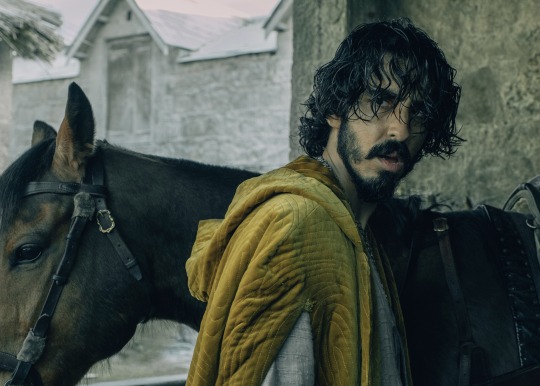
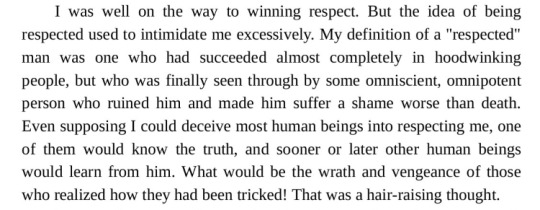



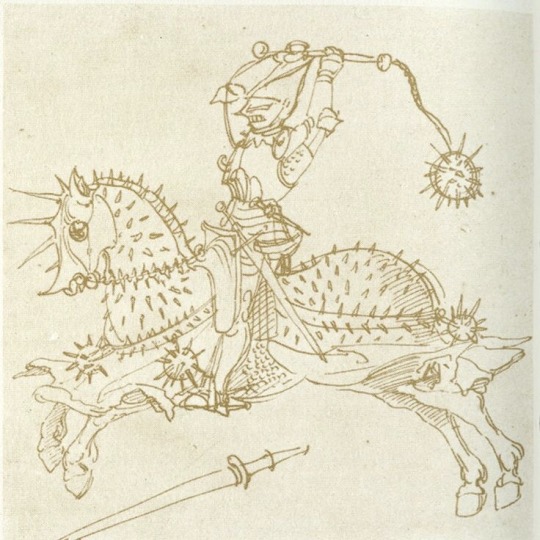
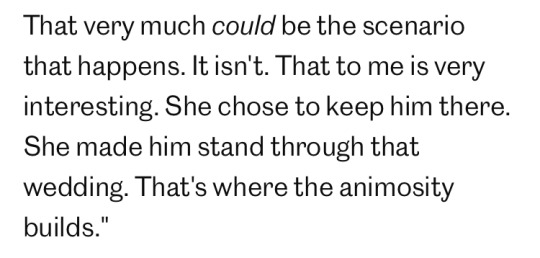


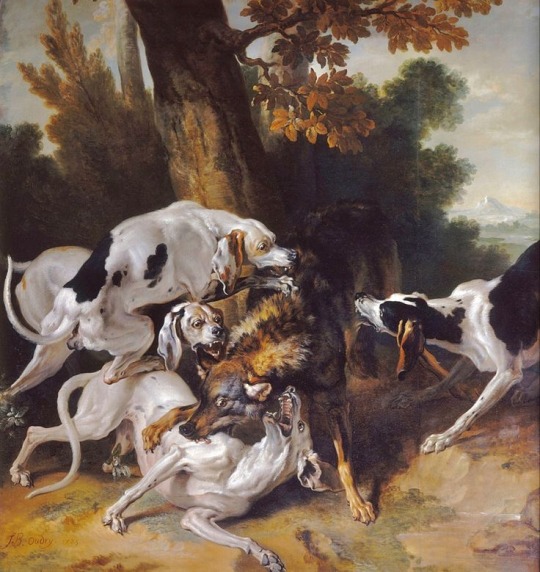







notes on lancelot - t.h. white, karl alexander wilke, your best american girl - mitski, a dance with dragons - george rr martin, interview with graham mctavish - tvline, the green knight - david lowry, no longer human - osamu dazai, the manliness of christ - thomas hughes, king lear - william shakespeare, knight on horseback - albrecht dürer, interview with fabien frankel - entertainment magazine, ‘nicky’ - momus, the story of the lost child - elena ferrante, wolf beat by hounds - jean-baptiste oudry, el perro negro - antonio villarreal, lucky like st. sebastian - momus, fire and blood - george rr martin
#saw languageofgirls’ post and was possessed#girl he’s been dead the whole time he’s an empty suit of armour he killed himself in significant sense years ago#asoiaf#a song of ice and fire#criston cole#webweaving#web weaving#house of the dragon#hotd
447 notes
·
View notes
Text

Edward Lear A Study of Ferns Civitella (Italy). Oil on green wove paper: 15 × 17 cm (6 × 7 in). October 1842.
#edward lear#art#light academia#forest#beauty#plants#ecology#earth#science#leaves#flowers#botanical#outdoors#oil painting#nature#landscape#19th century#garden#art history#naturecore
99 notes
·
View notes